
Geospatial Management Solutions
GIS and Remote Sensing Portfolio
South Carolina COVID-19 Response
I developed a dashboard that became a crucial tool for multiple state agencies and partners involved in the pandemic response. Through geospatial analysis, I identified optimal locations for testing and vaccination sites and provided insights that informed the deployment of medical resources such as PPE and ventilators by the SC National Guard.
It's rewarding to see my work being used in every aspect of the statewide response, from deciding where to send soldiers and resources to make more effective and efficient decisions overall. I'm proud to be part of an agency where GIS is fully integrated into decision-making and to have the opportunity to make a meaningful impact with my skills.





The Urban Morphology of Hyderabad, India: A Historic-Geographic Analysis
I studied the urban morphology of Hyderabad, India, using a mixed-methods approach that combined historical maps, Landsat images, and archival documents. My research explores how historical processes shaped the city, including the influence of Greek philosophy on Islamic cosmology and urban design in 15th century South Asia, the impact of the 1908 Musi river flood and early 20th century pandemics on urban development, and the current effects of globalization on Hyderabad's urban morphology.
My analysis involved quantifying urban buildup areas and classifying urban land using maps and satellite data from different time periods. I also examined the City Improvement Board projects that followed the 1908 flood and studied four centuries of urban growth in Hyderabad.
The resulting visuals depict the urban buildup of Hyderabad from 1687 to 1944, urban land classification in 1975 and 2015, and the impact of City Improvement Board projects and urban growth on the city.
Conservation Mapping
As part of my work with the Congaree Land Trust (CLT), I created a map to showcase the conservation efforts of the organization and its partners in protecting the Cowasee Basin from various forms of encroachment. Conservation is all about partnerships, and this map highlights the results of collaboration between public and private organizations.
The Cowasee Basin is a complex and valuable environment that requires data analysis, geodesign, and cartography to make informed conservation decisions. Given limited resources for conservation efforts, GIS plays a critical role in ensuring efficient and effective use of those resources.
Through my work with the CLT, I demonstrated how GIS can support and enhance conservation partnerships, allowing for better decision-making and protection of important ecological areas like the Cowasee Basin.
My map is even featured on ESRI's website.
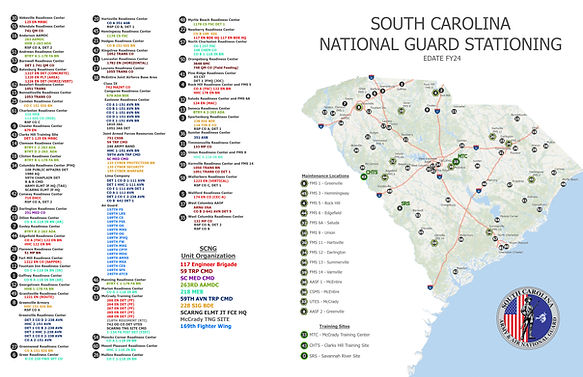
National Guard Stationing
I present the 2023 annual report version of the South Carolina Joint Army and Air National Guard Stationing Map. This map serves as a vital planning tool for the organization, offering a detailed overview of strategic deployments and resource allocations within the state. Its thorough design reflects extensive research and collaboration, providing essential insights for operational efficiency and readiness. This map underscores the dedication and precision essential in guiding our National Guard's mission readiness and strategic deployment strategies.

Western Michigan University Facilities Management Cartography
As a GIS graduate assistant at Western Michigan University's Facilities Management Engineering office, I created a visitor map for the campus. While my primary focus was on utility systems, I also worked on cartographic products for visitors.
One of my significant achievements in this role was to align the campus map symbology with the Western Michigan University brand standard. By adapting the brand's color palette and visual identity standards to cartographic uses, I made the maps more engaging and visually appealing for visitors.
Branding and cartography are closely related, but brand standards don't always consider cartographic needs. Through my work, I demonstrated how adapting brand standards can improve the quality and effectiveness of cartographic products.
Banding Neo-Tropical Migratory birds for the Monitoring Avian Productivity and Survivorship(MAPS)Program
As a participant in the SC National Guard's Monitoring Avian Productivity and Survivorship (MAPS) program, I contribute to the conservation of neo-tropical migratory birds and their habitats. Our program involves setting up bird nets to capture these species and collecting vital demographic information. Specifically, I band these birds to track their movements and monitor their health on the National Guard's property.
Getting up before dawn to set up the nets can be challenging, but it's worth it to interact with these beautiful creatures up close. While I enjoy working with all the species we capture, Northern Cardinals hold a special place in my heart for their unique personalities and feisty attitudes. By participating in the MAPS program, I'm proud to play a role in protecting these important birds and their habitats across the continent.
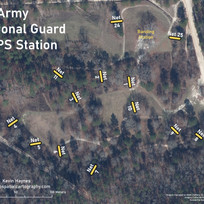
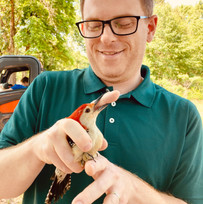

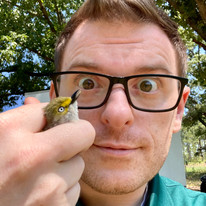
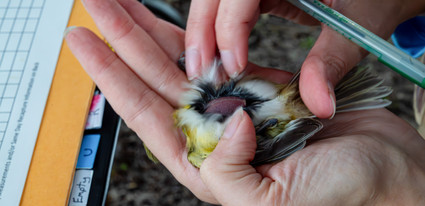
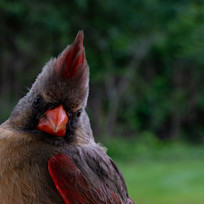
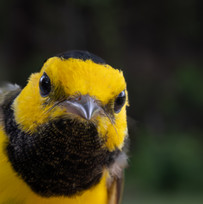
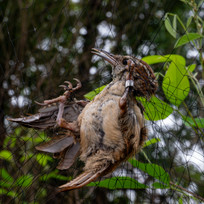
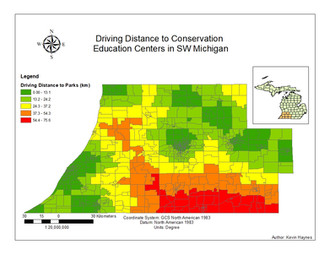
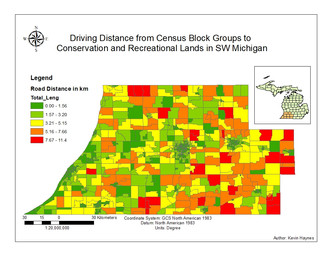
Environmental Transportation Planning
As part of a natural resource management project for a nonprofit organization, I contributed to a site planning analysis by producing transportation maps and data.
By analyzing transportation patterns, we were able to identify an ideal location for a new conservation education center. My work on this project highlights the importance of using GIS in environmental planning to make data-driven decisions that can have a significant impact on conservation efforts.
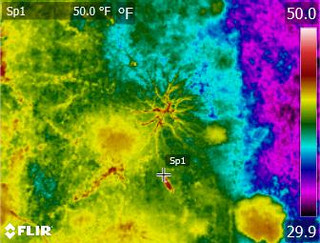


Deer Surveying with UAS and Thermal Infrared
Using drones equipped with thermal infrared sensors is a cost-effective way to survey deer populations in densely forested areas.
I conducted a deer count by flying a DJI Inspire 2 drone equipped with a thermal infrared sensor over a forested area. This approach offers a faster and more efficient alternative to traditional ground surveys, which involve walking in grid patterns. By using geospatial technology, we can reduce the time and resources required to survey large areas, while still obtaining accurate data. This demonstrates the potential for drones and thermal infrared sensors to revolutionize wildlife monitoring and management.
Utility Systems Mapping
I created a series of maps as part of Western Michigan University's dry weather stormwater monitoring plan. These reference maps were designed for engineering consulting firms to help locate utility infrastructure. The maps feature high-resolution aerial imagery and simple design to convey the necessary information.
My work on this project demonstrates how GIS can be utilized to support engineering consulting firms in their work. By providing clear and accurate maps, we can ensure that infrastructure is located efficiently and effectively, helping to support the overall goals of the monitoring plan.
Digital Photogrammetry: Structure from Motion (Sfm)and 3D Modeling
As part of my work with a rock quarry, I utilized structure-from-motion (SfM) digital photogrammetry to calculate stockpile volumes. I collected data using a Phantom 4 Pro drone and processed it using Pix4D software.
By using drones and SfM photogrammetry, I was able to calculate stockpile volumes more efficiently, effectively, and safely than with traditional manual techniques. This project highlights the benefits of utilizing GIS and remote sensing technologies to improve accuracy and efficiency in a variety of applications, including the management of natural resources like those found in a rock quarry.
In addition to imagery, drones can also be used to create 3D models of places and objects with remarkable precision, allowing measurements to be taken at the scale of millimeters. Ground control points called aeropads can be used to collect GNSS data that ensure geometric accuracy in 3D models.
Using a DJI Inspire 2 drone and Pix4D photogrammetry software, we produced high-resolution orthomosaics and 3D models of various sites at Western Michigan University, demonstrating the power of UAS technology for geospatial data collection and analysis.
Archival Research and
Remote Sensing
Archival research is a valuable complement to remote sensing for studying the complex and nuanced interactions between humans and their environment. During my geography thesis, I conducted archival research in Hyderabad, India to contextualize my remote sensing analysis.
While remote sensing provides a wealth of earth observation data, its interpretation and application require an understanding of the social, historical, and economic factors at play. To account for these complexities, I adopted a mixed-methods approach that combined remote sensing and GIS with archival research. By analyzing physical records dating back thousands of years, I was able to enhance my understanding of the region's history and better contextualize my findings.























